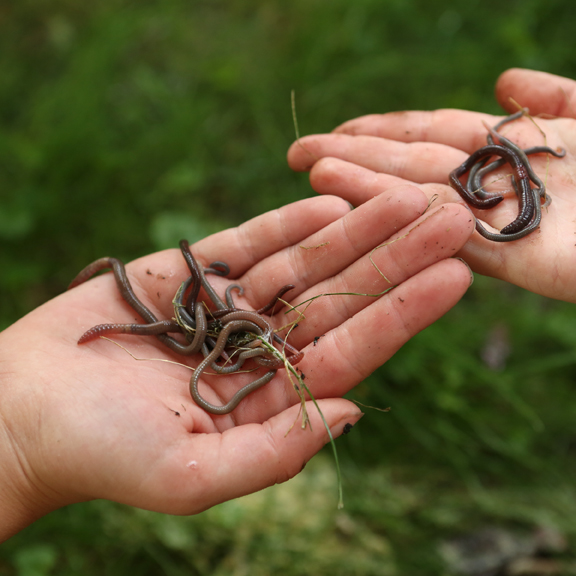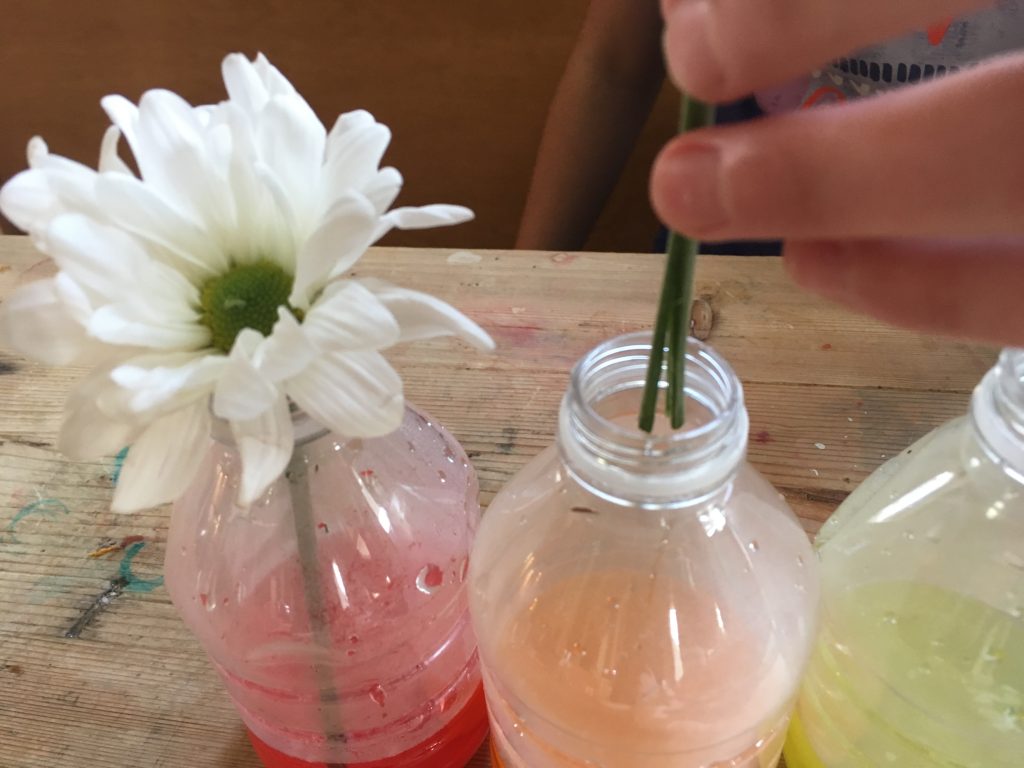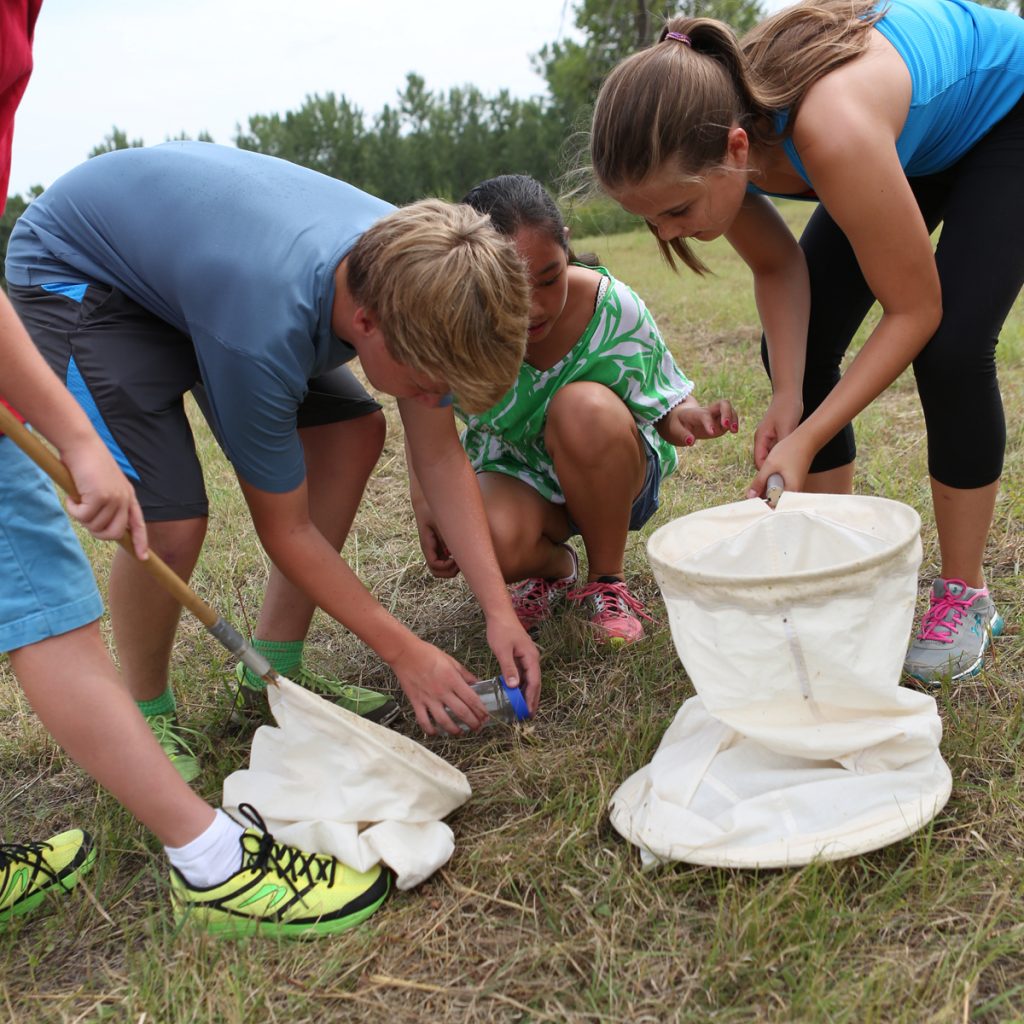Tag: experiments’
Coffee Filter Volcano
- by KitchenPantryScientist
(Re-posting one of our favorite experiments!)
Last spring, I went into my daughter’s first grade classroom to do the famous volcano experiment that involves mixing baking soda (sodium bicarbonate) and vinegar (acetic acid). Unfortunately, with our hectic schedule there was no time to create a “work of art” volcano from paper mache or clay. So, we made one out of a paper bag. It was a smashing success. Note: It works just as well to use a coffee filter instead of a paper bag.

To make your own paper bag volcano, you’ll need a brown paper lunch sack (or a slightly bigger one like we used), an empty plastic water or soda bottle, a cup of vinegar, red food coloring and about a fourth of a cup of baking soda. *Cone coffee filters make great volcano cones too and work well on small plastic bottles!

Remove the lid from the bottle, invert the brown bag over it, and tear open the bottom of the bag, along the flaps. Then, loosely tape the paper sack so that it fits around the mouth of the bottle. Don’t tape it to the bottle. If you like to draw, you can decorate the bag with markers.. We squashed and tore the bottom of the bag a little, to make it look more mountain-like.
Now, remove the bottle, fill it with the vinegar and add several drops of red food coloring for your “lava.” Place the bag bag over the bottle to hide the lava container.

Place the volcano on a tray or something that will contain overflow and you’re ready for eruption!
Using a folded piece of paper or a small paper cup with the lip pinched into a spout, quickly dump all of the baking soda into your bottle to start the chemical reaction. You’ll see the volcano erupt as the baking soda combines with the vinegar to produce carbon dioxide gas, which is one of the gases spewed by real volcanoes.


If you liked this experiment, try making “fizzy balloons“ with the same ingredients (plus a balloon, of course!) If you want to learn more about carbon dioxide gas and the carbon cycle, here’s a link to a cool video from NASA that explains it using a banana and a chunk of coal.
45 How-To Science Experiment Videos for Kids
- by KitchenPantryScientist
Physics! Biology! Chemistry! Yeah!
Great job staying isolated to help keep everyone safe! Keep up the good work! Scientists and medical workers are busy testing anti-viral drugs and creating vaccines that will help us to help get life back to normal as soon as humanly possible. They are the superheroes we need right now!
Click HERE for 45 Watch-and-Do Videos for Kids. Some, like cornstarch goo and tie-dye milk are perfect for the younger crowd, while older kids can tackle the tougher projects.
For more detailed instructions, go to kitchenpantryscientist.com and search for the experiment in the search box! You can also order my books online wherever books are sold.

Catching Bugs: 5 Science Projects from Outdoor Science Lab for Kids
- by KitchenPantryScientist
Our planet is buzzing with life, and over 90% of all the animals on Earth are invertebrates, including worms, insects and arachnids. From Earthworms to sow bugs and butterflies, your neighborhood is teeming with amazing creatures.

Below are five science projects from my book Outdoor Science Lab for Kids ! Click on the experiments below for instructions, or order your copy (wherever books are sold) to find step-by-step instructions, how-to photos, science explanations and more outdoor science experiments!

1.Find some Monarch eggs or caterpillars to raise into butterflies!
2. Make a pit trap to discover which invertebrates are living in your neck of the woods.

3. Assemble a homemade sweep net from wire and a pillowcase to capture insects and arthropods.

5. Make a bug house to discover what environment isopods (pill bugs and sow bugs) prefer.

What did you discover?
Basketball Science for the Final Four
- by KitchenPantryScientist
Love basketball? Think you’re pretty good? Try taping some coins to a basketball, or covering one eye and shooting the ball. The coins change the ball’s center of mass, making it harder to shoot, and covering one eye messes with your depth perception! Try it!
I had fun thinking up these new basketball experiments that we tested on TV this week. Can you come up with one of your own? What could you try?
Rainbow Science
- by KitchenPantryScientist
Happy Saint Patrick’s Day! Yesterday, I demonstrated some fun rainbow science on The Jason Show. Click here to watch!
As part of the segment, I featured the “Rainbow Slime” experiment from my new book, “STEAM Lab for Kids,” which you can order from Amazon, Barnes and Noble, or your favorite online retailer. Here’s a sneak-peek at a few photos from the book.

Rainbow Slime from “STEAM Lab for Kids” by Liz Lee Heinecke

Rainbow Slime from “STEAM Lab for Kids” by Liz Lee Heinecke

Rainbow Slime from “STEAM Lab for Kids” by Liz Lee Heinecke
Science Light
- by KitchenPantryScientist
Here’s a fun optics experiment, based on one created in 1842 by Jean-Daniel Colladon, that you can do at home using a laser pointer and a bottle of water.
Parental supervision required. (Eye protection recommended for kids.) Never shine a laser pointer at or near eyes, as it can cause blindness.
Skullsinthestars.com has a well-written, detailed explanation of how light can be reflected in a transparent medium, like water.
Candy Experiments
- by KitchenPantryScientist
We have bags full of candy at our house, and I’d like to see them disappear as quickly as possible. Here are a few science experiments we tried, substituting candy for other ingredients:
Candy Chromatography: We put candy in water and used coffee filters to separate out the colors, via capillary action.

Skittles in water with coffee filter strips between cups…

Coffee filters on cups, with water dripped onto a piece of candy.
Candy-drinking plants? We dissolved candy in warm water and added white carnations with cut/split stems to see whether they’d change color as the flowers drew the water up into their petals.



Candy Vegetable Vampires: We tried the same experiment with Napa Cabbage, via the Vampire Vegetables experiment in Kitchen Science Lab for Kids.


We’re also going to freeze candy in ice and make Tie Dye milk with Skittles!
What could you try with your candy?
10 Fun Kitchen Halloween Science Experiments for Kids
- by KitchenPantryScientist
Here are ten quick and easy experiments to make your Halloween even more fun and memorable!

Click on these links for instructions on how to make:
Oozing Monster Heads (from Outdoor Science Lab for Kids)
Frankenworms (from Kitchen Science Lab for Kids)
Cornstarch Goo (from Kitchen Science Lab for Kids)
Mad Scientist’s Green Slime (from Kitchen Science Lab for Kids)
Alien Monster Eggs (from Kitchen Science Lab for Kids)
Magic Potion (from Kitchen Science Lab for Kids)
Bags of Blood (from Kitchen Science Lab for Kids)
Vegetable Vampires (Scholastic.com/Experiment from Kitchen Science Lab for Kids)
Here are a few of my favorites!
You can find more experiments by scrolling down on my website!
16 Summer Science Experiments
- by KitchenPantryScientist
Between working on a follow-up to Kitchen Science Lab for Kids (which involves testing, writing up and photographing 52 experiments), driving my kids around to camps and sports, and doing science outreach at libraries, bookstores and on TV, I’m finding it hard to keep up. Here’s a short video on how to make tie-dye milk (a surface tension experiment), which I did on WCCO Mid Morning show last week and forgot to post!
Luckily, between all the camps and activities, the kids and I are having fun digging in the dirt, blowing giant bubbles, and watching tadpoles and monarch caterpillars go through metamorphosis!
What science experiments are you doing this summer? It’s a great time to take science outdoors!
Here are some of our favorites:
Got water? Make siphons, a water-purifier, water rockets, or fire-proof water balloons.
Hungry? Build a solar oven from a pizza box and bake s’mores.
Stand on eggs or throw them as hard as you can without breaking them. You can always clean up mistakes with your hose!
Play magician with the tablecloth trick, or make paper bag volcanoes erupt in your back yard.
Of course, there’s always the famous Mentos geyser, and film canister rockets are always a hit.
Nature walk bracelets add fun to any excursion, and you can collect water from trees or make water filters with grass and sand.
August is a great time to find Monarch caterpillars or study the earthworms in your back yard.
And no summer would be complete at our house without an epic marshmallow shooting competition. You’ll even learn some physics!
Halloween Science: Fizzy Balloon Monster Heads, Green Slime and More
- by KitchenPantryScientist
With a few ingredients from your kitchen, you can turn your table into a mad scientist’s laboratory for Halloween! We made Fizzy Balloon Monster Heads, Alien Monster Eggs, Rock Candy and Soda Geysers on Fox9 News this morning. Click on the blue experiment names for directions!
KMSP-TV
Last Saturday morning, I had fun showing Kare11 meteorologist Belinda Jensen how to make Mad Scientist’s Green Slime, Frankenworms and Magic Potion. Click here to watch!


